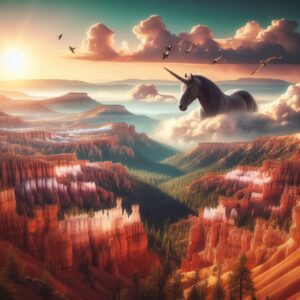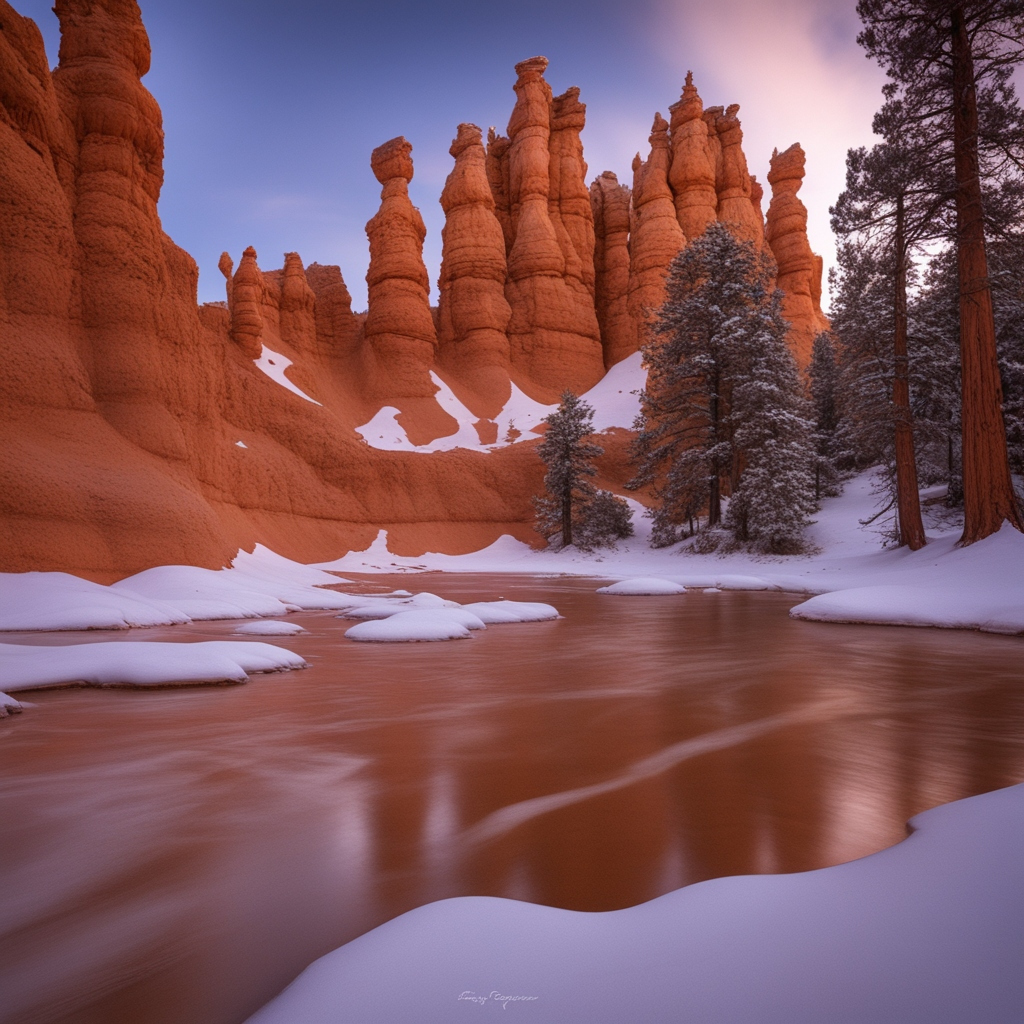5 Must-See Hoodoos: Exploring Bryce Canyon National Park’s Geological Marvels
Introduction
🌲 Welcome, fellow nature enthusiasts! If you’ve ever dreamt of stepping into a fairytale-like realm where towering red rock spires cast enchanting shadows across the landscape, Bryce Canyon National Park is your real-life wonderland. Nestled in the heart of Utah, this natural masterpiece boasts a unique amphitheater filled with whimsical hoodoos that seem straight out of a fantasy novel.
🏞️ Picture this: a sunrise at Bryce Canyon, where the first rays of sunlight paint the hoodoos in a warm, ethereal glow, or a sunset that transforms the entire canyon into a canvas of vibrant hues. It’s a place where time slows down, and the world around you becomes a playground of geological wonders.
🗺️ But hey, don’t just take my word for it – join me on a virtual journey through Bryce Canyon National Park. From the iconic viewpoints to lesser-known trails, we’ll unravel the secrets of this natural wonder and discover why it’s a must-visit destination for anyone seeking a genuine connection with the great outdoors.
Ready to be swept off your feet by the sheer beauty of Bryce Canyon? Let’s embark on this adventure together and explore the magic that awaits around every hoodoo corner! 🌄✨
Attractions in Bryce Canyon National Park :
Presented below is a table showcasing the top 25 attractions in Bryce Canyon National Park, spotlighting the unique characteristics that set each location apart and make it noteworthy.
| # | Attraction | What’s Special |
|---|---|---|
| 1 | Bryce Amphitheater | Majestic collection of hoodoos, a geological wonder. |
| 2 | Navajo Loop Trail | Scenic hiking trail through the heart of the hoodoos. |
| 3 | Thor’s Hammer | Iconic hoodoo resembling the Norse god’s legendary weapon. |
| 4 | Sunset Point | Prime location for breathtaking sunset views over the canyon. |
| 5 | Queens Garden Trail | Trail winding through hoodoos with the Queen Victoria rock formation. |
| 6 | Bryce Point | Panoramic viewpoints offering vistas of the entire amphitheater. |
| 7 | Fairyland Loop Trail | Adventure through a fairy-tale landscape with diverse hoodoos. |
| 8 | Agua Canyon | Viewpoint showcasing vibrant rock colors and towering formations. |
| 9 | Natural Bridge | Arch-like rock formation creating a natural bridge. |
| 10 | Mossy Cave Trail | Short hike leading to a mossy alcove and waterfall. |
| 11 | Rainbow Point | Highest point in the park with panoramic views of different rock layers. |
| 12 | Yovimpa Point | Overlooks the canyons and offers stunning views of the surrounding area. |
| 13 | Swamp Canyon | Scenic overlook with a unique perspective of the canyon landscape. |
| 14 | Piracy Point | Features hoodoos and fascinating geological formations. |
| 15 | Silent City | Cluster of hoodoos resembling a cityscape in the amphitheater. |
| 16 | Farview Point | Offers panoramic views of the distant Henry Mountains and beyond. |
| 17 | Tower Bridge | Distinctive rock formation resembling a natural bridge with towers. |
| 18 | Hat Shop | Collection of hoodoos resembling a hat shop in the canyon. |
| 19 | Paria View | Overlooks the Paria River Valley and the Vermilion Cliffs in the distance. |
| 20 | Bristlecone Loop | Trail featuring ancient Bristlecone Pine trees and scenic views. |
| 21 | Black Birch Canyon | Hidden gem with unique rock formations and quiet surroundings. |
| 22 | Hat Shop Trail | Hiking trail leading to the Hat Shop formation for a closer look. |
| 23 | Aqua Canyon Trail | Scenic trail offering up-close views of Aqua Canyon’s beauty. |
| 24 | Bryce Canyon Visitor Center | Information hub with exhibits, maps, and ranger assistance. |
| 25 | Sunset Campground | Rustic camping experience with proximity to stunning sunset views. |

Guide:
Bryce Canyon National Park:
Bryce Canyon National Park, located in southern Utah, is renowned for its unique geological formations called hoodoos, carved by erosion over millions of years.
Bryce Canyon National Park Utah:
Bryce Canyon National Park is situated in southwestern Utah, offering visitors a stunning display of colorful hoodoos and breathtaking natural landscapes.
Where is Bryce Canyon Located:
Bryce Canyon National Park is located in the state of Utah, USA, near the town of Bryce.
Weather:
The weather at Bryce Canyon National Park varies, with summers being warm and dry, while winters can be cold with snow. It’s advisable to check the forecast before visiting.
History of Bryce Canyon:
Bryce Canyon National Park was established as a national monument in 1923 and later designated as a national park in 1928 to preserve its unique geological features.
Bryce Canyon National Park Entrance Fee:
As of 2024, the entrance fee to Bryce Canyon National Park is $20.00–$35.00 per vehicle. It’s recommended to check the official website for the most up-to-date fee information.
Activities and Things to Do:
Things to Do in Bryce Canyon National Park:
Popular activities include hiking the scenic trails, attending ranger programs, stargazing due to the park’s Dark Sky status, and enjoying the breathtaking viewpoints.
Park Trails:
Bryce Canyon offers a variety of trails, such as the Navajo Loop, Queens Garden Trail, and Fairyland Loop, each showcasing the park’s unique rock formations.
Park Tours:
Guided tours are available, providing insightful information about the park’s geology, flora, and fauna. Some tours include scenic drives and photography opportunities.
Camping:
The park features two campgrounds: North Campground and Sunset Campground, providing camping facilities amidst the stunning natural surroundings.
Things to Do in Park:
Apart from hiking, visitors can participate in horseback riding, bird-watching, and snowshoeing during the winter months.
Activities:
Activities range from ranger-led programs, including educational talks and astronomy programs, to seasonal activities like snowshoeing and cross-country skiing in winter.


Frequently Asked Questions About Bryce Canyon National Park:
1. Best Way to See Bryce Canyon: To truly appreciate the ethereal beauty of Bryce Canyon, embark on a hike along the rim or delve into the intricate hoodoos on the trails. The Navajo Loop and Queen’s Garden Trail showcase the park’s unique formations. For a panoramic perspective, Sunrise and Sunset Points offer breathtaking vistas, especially during the golden hours. Exploring on foot allows an intimate connection with the mesmerizing landscape.
2. Reaching Bryce Canyon National Park: Accessing Bryce Canyon is most convenient by car. The nearest major airports are Cedar City Regional Airport and St. George Regional Airport. From there, a scenic drive brings you to the park. Alternatively, shuttle services operate from nearby towns. Plan your route and relish the journey, as the approach to Bryce Canyon is as captivating as the destination.
3. Best Ways to See Zion and Bryce Canyon Without Grand Canyon: To skip the Grand Canyon but still savor the wonders of Utah, opt for a road trip focusing on Bryce Canyon and Zion National Parks. Explore Zion’s towering sandstone cliffs and emerald pools, then venture to Bryce Canyon for its surreal amphitheaters. Engage in ranger-led programs, embark on scenic drives, and partake in guided hikes for a comprehensive and unforgettable experience.
4. Differences Between Bryce Canyon and Zion: Which to Visit First: Bryce Canyon and Zion National Parks, while both extraordinary, offer distinct landscapes. Bryce captivates with its hoodoos, while Zion boasts towering cliffs and lush canyons. The choice between the two depends on personal preferences. Some recommend starting with Zion for its variety, reserving Bryce for a finale to marvel at its unique formations. Ultimately, both parks are treasures worth exploring.
5. Seeing Bryce Canyon in One Day: For a fulfilling day at Bryce Canyon, focus on the main viewpoints and a selected trail. Start at Sunrise Point, proceed to Sunset Point, and explore the Rim Trail. If time allows, descend into the amphitheater via the Navajo Loop. To maximize your visit, join a ranger-led program to deepen your understanding of the geological wonders.
6. Preventing Hiking Accidents at Bryce Canyon: Ensure a safe hiking experience by adhering to park guidelines. Stay on marked trails, carry sufficient water, and be mindful of weather conditions. Educate yourself on the chosen trail’s difficulty level, wear appropriate footwear, and notify someone of your plans. In emergencies, use the park’s shuttle system for assistance. Practicing responsible hiking guarantees an enjoyable and secure adventure.
You may also consider discovering information about Zion National Park.

